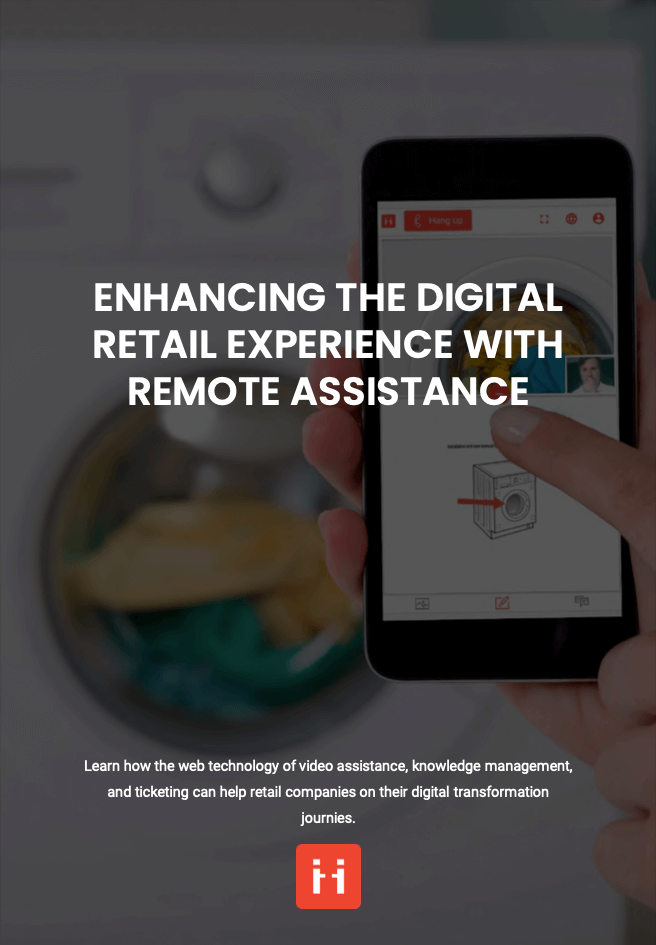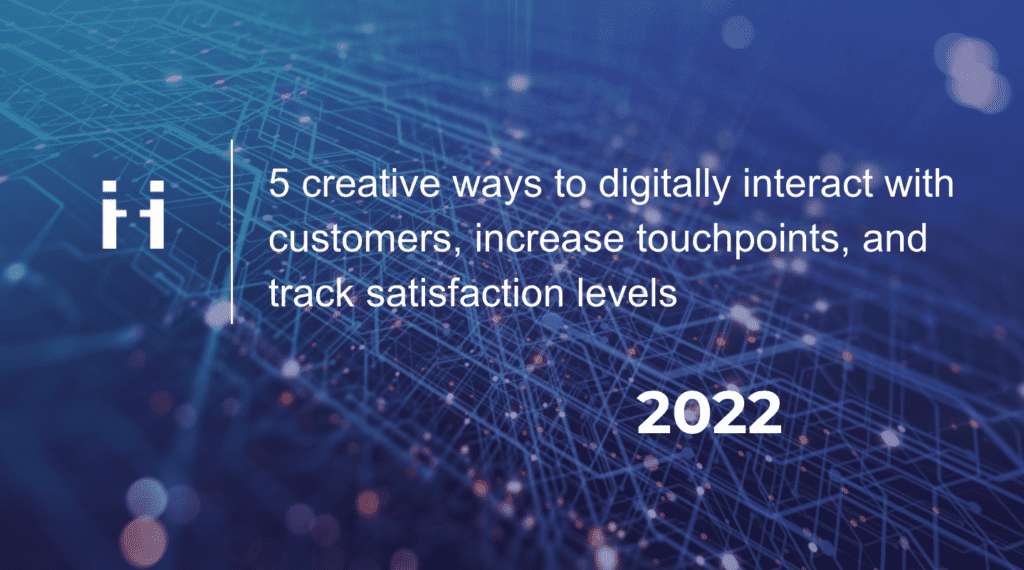Digital interaction with customers is now an essential tool as online business is going through its rebirth. However, it has long been said that it can take as many as 8 touchpoints before a customer finally buys from a business online. That’s a lot and it possesses a challenge of keeping the clients interested and walking them through every single one by providing a high-quality digital customer experience, so at the end, they make a decision in favor of your product.
But what if your customers don’t get to 8 and get stuck on touchpoints 2 or 3? This is why it is extremely crucial to produce content relevant to a particular touchpoint, otherwise, you would not like your customer to be flooded with information about a product’s new features if they are only at the beginning of their customer journey and would rather prefer learning general characteristics of your product or service.
Although 8 customer touchpoints can seem like a lot, it’s essential that you find a way to increase their touchpoints so that you’re able to:
- Nurture a relationship with them
- Guide them along the customer journey
- Make a sale
Digital interaction is a great asset that can tackle the challenge of improving the customer experience online, and they are different ways of using it to the advantage of your business. One of them is the implementation of complementary tools like visual support to build strong, long-lasting relationships with clients.

1. What are customer touchpoints?
Customer touchpoint is the point of interaction that a customer makes during their buying journey and your funnel. It can be a comment on a Facebook post, an email inquiry, newsletter signup, and more.
The touchpoints take place at various parts of the buying journey, which is often broken down into three stages:
- Awareness
- Consideration
- Decision
Since there are three stages, and because a customer typically has to go through each stage before they finally make a buying decision, it’s important that you’re able to increase touchpoints throughout each stage. This will not only provide all the necessary information about your product to your client but also create an emotional connection between the customer and your business. Hence, the more touchpoints you have, the more interested the customer is in what you’re offering.
2. 5 creative ways to increase your touchpoints
You can get creative when deciding what kind of touchpoints you should add across the funnel. Some of them are:
2.1. Add live chat to your website for better customer support
Nowadays live chat is something your customers expect to see on your website.
In fact, 82% of customers expect instant responses from brands — and the only way to provide instant responses is via live chat.
Live chat is especially important during the consideration phase. A customer might be weighing up their options and veering between you and a rival brand, and they might have a query that they need to be answered ASAP. You can win them over if they ask their query on your website with a chatbot and receive a helpful response.
Moreover, because an AI-driven chatbot can learn more about each customer with each interaction, it can provide a personalised experience going forward.
Live chat can be part of your overall customer support. If the issue is impossible to resolve by using it, ViiBE can easily connect the customer with the right expert. Thanks to a seamless integration that runs on WebRTC access to audio and video feeds, it will not require any download.
Other areas of customer support you could improve include:
- Add a highly detailed FAQ page to your website
- Be available via telephone for in-depth support and help that a chatbot can’t provide
- Offer video calls to your customers
ViiBE’s visual assistance completely transforms the approach of telephone in-depth support and moves it online, where in one instant click you can address the pending issue, and as a result, increase productivity or the number of work orders completed. During the call, both parties can share attachments and store them in one single place in case the solution has not been achieved and another call is required. It is a great way to analyse the different aspects of the interactions, as well as develop a knowledge base for future employee training.
2.2. Produce interactive content on social media
Research has shown that 90% of customers will buy from businesses they follow on social media.
It follows, then, that if you can create interactive content on social media, people will stay engaged on your pages — and make purchases from you.
The key, however, is to remember that social media is a touchpoint — it isn’t a place to make the final sale. Once you treat it as a touchpoint, you can then build solid relationships with customers. This means creating content that is educational, inspirational, engaging, and crucially — interactive. In other words, you want to create content of so much value that people will leave comments, like it, and share it.
Here are some ideas:
- Polls – Ask questions and invite feedback from your customers. Learn more about them and show them that their opinions matter.
- Videos – There are lots of different types of videos you can create and share, including behind-the-scenes looks at your business, live streams, interviews, how-to guides, montages, and more.
- Infographics – Infographics are an excellent piece of visual content that helpfully explains, supports, and conveys information to your audience that can help to position you as an expert in your niche. Making infographics simplify complex ideas, while visually engaging your audience.
- Storytelling – Talk about your brand values and product peculiarities in an unusual way that would establish an emotional connection with the customer and demonstrate what experience they will receive if they become your client.

Enhancing the Digital Experience with Remote Assistance
2.3. Use gamified popups
There was a time when marketers claimed pop-ups don’t work, but that time is over. In fact, the top 10% highest-performing pop-ups averaged a 9.28% conversion rate. The reason they might not convert (and annoy people instead) is if you:
a. use them at the wrong time
b. use them incorrectly.
Your best shot at increasing touchpoints with a popup is to use an exit-intent popup, which appears whenever a customer is about to exit your website.
You can get creative by making it a gamified popup.
How does this work?
For instance, let’s imagine a customer is just about to abandon their cart. You can then time your popup so that it appears at the right moment with an offer of a discount if they complete the form and as an example—try their hand at a quick game. This game absolutely must be brief, and it could be something as simple as a free spin on a wheel. It’s fun, it’s interactive, and it’s designed to reward the end-user, and persuade them to stay engaged with your brand (and perhaps even complete their purchase).
2.4. Product reviews
Product reviews work really well as a customer touchpoint and can’t be ignored.
Research has shown that 92% of customers trust online reviews.
When a customer is in the consideration stage, they will turn to product reviews to help them decide their next move.
Online reviews make your brand more customer-friendly, and they establish trust and social proof. They also demonstrate to what extent customers are satisfied with your product and how you can improve it. Customers can even upvote or downvote reviews, which is perfect for brand interaction.
If your products don’t have many reviews (or any at all), it’s very difficult for a customer to determine whether or not they should buy your product because customers need some form of social proof, especially when it comes to online businesses they haven’t bought from before.
Moreover, the hard work is done for you by other customers. All you have to do is find a way of encouraging more people to leave reviews. Here are some tips:
- Ask! You can send a reminder email to customers a few days after they’ve made a purchase to see if they’d kindly leave a review
- Explain to your customers why reviews are easy
- Provide them with a template
- Use incentives
2.5. Host a virtual event
Virtual events have become increasingly popular. Studies show that 70% of event organizers moved either all or part of their events to an online platform in 2020. And for good reason, as the events do many things.
They raise more awareness of your brand, they make it more personable, they help you educate your customers on a particular topic, and they also mean you get to create an entire community around your brand.
They can therefore work at both the awareness and consideration stage of the customer journey and can be an excellent way of engaging your customers while also encouraging interaction.
Indeed, you can encourage more interaction during your virtual event by using an API to build a custom chat solution that encourages the audience, building a community, and scaling to thousands of users. ViiBE’s open API will allow you to access easily all the necessary data on users, shared attachments, and available archives.
3. Conclusion
In the era of vigorous digitalization, it is especially crucial to provide the same customer experience online as the clients would receive it offline across all the touchpoints of their journey from the moment they decided that they need your product to the actual purchase decision. Visual support tools like ViiBE help to make digital interaction with customers automated and personalised in one click as well as manage data and feedback from customers to tailor business strategies to the clients’ needs and expectations.

